 [Updated at end of article with video of Goddard's Tuesday press conference, and a radio appearance shortly thereafter.]
[Updated at end of article with video of Goddard's Tuesday press conference, and a radio appearance shortly thereafter.]
No evidence of manipulation was found in the results of a 2006 special election in Pima County, AZ, according to the state Attorney General's announcement given at a press conference this afternoon in Tucson.
Today, AG Terry Goddard announced the results of his findings from a paper-ballot hand count, held earlier this month in Phoenix as part of a criminal investigation into whether the results of the '06 election were manipulated by election officials. A multi-partisan coalition of election integrity advocates have long charged that the results of the 2006 Regional Transportation Authority (RTA) election may have been electronically tampered with via the county's Diebold optical-scan central tabulator system.
The criminal investigation was re-opened in July of 2008, following the filing of a sworn affidavit from a former county employee who claimed he was told by a Pima County Election Division computer operator that the election was "'fixed'...on the instructions of his bosses."
The BRAD BLOG was listening in on the press conference, via a weak cell phone connection, so it was difficult to get direct quotes from Goddard, but we did speak to a number of people who attended the presser to get details from them, and were able to listen to Goddard's appearance on local radio shortly afterwords...
AG: Original Results 'Affirmed'
"The upshot is that the AG says the official numbers recorded on Election Day 2006 have been validated," Jim March, a local Libertarian Party election integrity advocate who was present at the presser, told us. He says that Goddard noted "discrepenacies in the count of about 300 to 500 ballots, which is .01%." March added: "That's typical of when you go back to hand count votes that were originally machine counted."
(See the AG's specifically reported numbers later in this report.)
As we noted in recent coverage here, the attorney for the Democratic Party, Bill Risner, had been in the process of receiving access to the poll tapes --- paper receipts printed out at the precinct before and after polls closed, presumably showing zero votes at the beginning of the day, and scanned results of totals at the end of the day --- when Goddard seized the ballots from the storage facility in Tucson to take them up to Phoenix for the hand count examination in late February. Those sealed boxes of ballots contained the poll tapes Risner had been seeking.
Risner and the Democratic Party, who had long been challenging the results of the election --- even though their party had originally endorsed the ballot measures that created the RTA and funded it with a half-cent tax increase --- believed the poll tapes might help to explain discrepancies they'd discovered in the Diebold tabulator databases which were released only after a long court battle brought by the party.
The AG's Press Secretary, Anne Titus Hilby, had told The BRAD BLOG last week that the poll tapes would be examined as part of the investigation. "Do we plan to examine those?" Hilby responded directly, "Yes, we're examining all of the evidence seized, including the poll tapes."
However, when a reporter asked about that quote from our report last week, during today's press conference, Goddard admitted they did not examine the tapes.
"The two things we wanted to hear, we didn't," J.T. Waldron, a documentary filmmaker who has been covering the years-long struggle for transparency in the RTA election, told us after the conference. "First, they admit they didn't look at the poll tapes. Second, they admit that they didn't do any forensic examination of the ballots" to see if they were legitimate. Critics have pointed out that Pima County has, since the 2006 election, purchased a ballot-on-demand printer and could have printed out ballots to match any 'fixed' '06 ballot counts. The originals were printed by an offset printer, rather than ink-jet, as used in the ballot-on-demand system, and a forensic examination of a sample of ballots, with a microscope, might have revealed any such tampering.
"He said he didn't have enough evidence to justify a forensic examination of the ballots," Waldron noted.
Appearing on local radio station KJLL 1330am however, following the press conference, Goddard once again confirmed his confidence in the original results and the findings of his investigation.
"We have the results of the hand recount. They are slightly different [from the original count] because you don't ever get the same results as you do when you count with a machine. But they are just a fraction off." he told KJLL's John C. Scott.
"I feel very very confidence that this hand recount has affirmed the original results of the Pima County Elections office."
[Update: Complete audio from Goddard's appearance on KJLL now posted at the bottom of this article.]
AG: 'Important Lessons' Learned
 Goddard noted that he undertook the examination because "there were suspicions that went in all one direction that could not be explained." He added that he didn't regret doing the hand count.
Goddard noted that he undertook the examination because "there were suspicions that went in all one direction that could not be explained." He added that he didn't regret doing the hand count.
"So there was a lot of smoke here, but no fire?" Scott asked Goddard on air.
"You know what? Until you check, you don't know," the AG answered. "I don't regret doing it for a minute. Many people will say this is a non-story because it had the same result. Well, that's not the case. The reason we took this step was because some of the suspicions that have been raised, I could not answer from the evidence that I had in front of me," he said. "There wasn't a credible explanation for all of the different coincidences that seemed to have happened on this particular election."
Goddard, who, following a previous investigation of the same election, concluded that the Diebold systems used in Pima County are "very, very bad," says a number of "important lessons" were learned in the process.
"We've learned a number of things. Important lessons. Frankly, some of them I could have done without," he added with a laugh. An earlier investigation, by a third-party computer security firm "concluded...that the Diebold system used by Pima County had a number of security vulnerabilities," he explained.
Following those findings, two years ago, Goddard said, "Pima County took constructive action and amended their security procedures to make up for the fact that the internal securities in the software weren't that good...The physical security was dramatically increased." He said the tabulation machines now "have to be in, essentially, in a cage, which is video-monitored 24 hours a day, and is only accessible by two people together...Before that wasn't the case....You could have taken a thumb-drive, which you could hide in your hand, and download election data without being observed. That was one of the vulnerabilities before, it's been eliminated, and you can't do that today...they have a way of sealing off all of those possible portals," he explained.
He also lauded the election advocates in Tucson. "Because of Pima County's leadership, the Secretary of State amended the state election security manual to incorporate these changes in procedure." He notes that Pima County went even further by banning the use of the Internet to transmit results, a procedure which is still used, however, in Maricopa County, the state's largest, which includes Phoenix. "Your elections are tabulated much slower than other parts of the state," Goddard told Scott, "But I think that's a badge of honor. That simply eliminates one more possibility of interference. I'd rather see that in the rest of the state than have them change Pima County's way of doing the tabulation."
The Mystery of the 'Missing' Ballots: Solved?
Though Goddard didn't speak to the matter in his presser, or on the radio afterwords, the mystery of what was believed by observers of the hand-count, from several different parties, to possibly be "thousands" of missing ballots, is currently being attributed to the difference in paper weight between the absentee and polling-place ballots.
The original estimate, from those who were concerned that ballots might be missing, was based on an average applied across all ballots, after observers counted the maximum number of ballots in a single box of vote-by-mail, "early" ballots.
Though there was no precinct-by-precinct numbers tracked, the AG says they counted a total of 120,888 ballots, which was actually 67 more ballots than originally reported by the Pima County Elections Department, which reported that 120,821 ballots had been cast originally.
A check of the difference in paper weight between the two types of ballots, one of the election observers told us this afternoon, confirms that the precinct ballots are, indeed, of lighter weight than the absentee-ballots used for their original measuring stick.
Overall, the results reported from the AG's examination included just over a thousand ballots that were apparently miscounted by the Diebold optical-scan system used to report the original results in 2006.
There were two questions concerning the RTA on the special election ballot. Question 1 asked for approval to create the RTA, and Question 2 asked about a tax-increase to fund it. Here are the results, as reported this afternoon, by the AG's office:
Question 1:
YES: 71,948 (Original) | 71,626 (AG) | Diff: 322
NO: 47,870 (Original) | 47,636 (AG) | Diff: 234
Total Difference: 556Question 2:
YES: 68,773 (Original) | 68,420 (AG) | Diff 353
NO: 50,551 (Original) | 50,306 (AG) | Diff 245
Total difference: 598
Why Not Get it Right on Election Night?
"It's still possible that there's a problem, but I don't know if we'll ever know for sure," Jim March told us by phone, following Goddard's press conference today, referring to the severe restrictions placed on observers during the AG's criminal investigation hand count.
"The level of observation was extremely low. Observers were barred. If the AG wanted to toss out false numbers here --- and I'm not saying they did --- they could have done so due to the limits they placed on observers."
But, he conceded, it's possible the Pima County Election Director, Brad Nelson, "ran such a sloppy shop, it just looked like the results were tampered with."
"Will we ever know for certain? No," he told us.
Pima's Democratic election integrity advocate John Brakey, who had voted for the RTA measures originally, but led the fight to determine whether they were properly counted, shared Goddard's outlook, seeing a brighter side of the picture.
"I'm glad to see the RTA looks like it passed, but we still have anomalies we needed answered," Brakey told us, referring to nearly 93 memory cards which were mysteriously reloaded into the central tabulators after observers left on Election Night.= in 2006. He described the practice as "highly unusual", noting that only 3 cards were reloaded during the much larger November, 2004 general election.
"I was grateful that Goddard did the recount, but the devil is in the details. But I feel better about it passing," he said. "I want to finish up our investigation and say 'Yeah, we got problems and yeah, we can fix them and everyone should vote. That's the ultimate goal."
"As I've always said," he added, "let's work together to get these votes counted, and show that every vote counts."
As we noted in a previous report on the Pima County mess, no matter what the results, one must question why we persist in using these god-awful, electronic, privatized, untested, hackable, oft-failed, secret vote-counting systems in our public elections that leave us --- even three years later, as in this case --- wondering about the results.
As a BRAD BLOG commenter recently pointed out, in all of these elections, from Minnesota to New York to Arizona, it seems the actual determination of final results comes about only by a hand count of ballots, perceived universally as the most accurate way to correctly determine the results of an election.
"The only way to follow through was to actually sit down and hand-count the ballots," Goddard said on air this afternoon. "That's the final indicator of whether an election result was changed."
All of which begs the question as to why transparent, observable, and accurate hand counts aren't simply done in the first place.
UPDATE: Here's Goddard's full appearance on the John C. Scott Show this afternoon. Thanks to KJLL 1330am for sending it over so quickly! Download MP3 or listen below (appx 11 mins.)...
UPDATE 4/22/09: Video of the complete Goddard presser follows below, courtesy of J.T. Waldron, producer of the upcoming Fatally Flawed documentary about the years-long struggle for accountability and transparency in Pima County.
The question about The BRAD BLOG's coverage of the AG Press Secretary Anne Hilby's direct quote that "Yes, we're examining all of the evidence seized, including the poll tapes," and her response claiming it to be a "misstatement on [her] part", comes at around 16:30 on the video. Goddard adds after that: "I don't see how they would be relevant to a hand-count".
The entire video is appx. 37 mins...


 Kamala Rising:
Kamala Rising: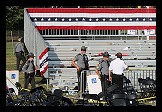 Evidence Fails to Establish Attempted Trump Assass-ination Politically Motivated
Evidence Fails to Establish Attempted Trump Assass-ination Politically Motivated Former MAGA 'Cultist' on the State of the Race for 'MAGA Americans': 'BradCast' 7/23/24
Former MAGA 'Cultist' on the State of the Race for 'MAGA Americans': 'BradCast' 7/23/24  'Green News Report' 7/23/24
'Green News Report' 7/23/24
 Biden Out, Endorses
Biden Out, Endorses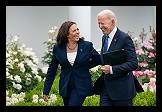 BIDEN DROPS REELECTION BID
BIDEN DROPS REELECTION BID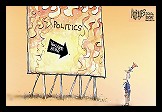 Sunday 'You Are Here' Toons
Sunday 'You Are Here' Toons What J.D. Vance Forgot to Tell You (and Lied About) at the RNC: 'BradCast' 7/18/24
What J.D. Vance Forgot to Tell You (and Lied About) at the RNC: 'BradCast' 7/18/24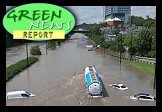 'Green News Report' 7/18/24
'Green News Report' 7/18/24 Holding on for Dear Life Amid the Political Whirlwind: 'BradCast' 7/17/24
Holding on for Dear Life Amid the Political Whirlwind: 'BradCast' 7/17/24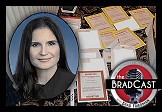 Cannon's Corruption: 'BradCast' 7/16/24
Cannon's Corruption: 'BradCast' 7/16/24 'Green News Report' 7/16/24
'Green News Report' 7/16/24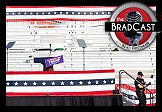 Amid the Assassination Attempt Aftermath:
Amid the Assassination Attempt Aftermath:
 Meanwhile... : 'BradCast' 7/11/24
Meanwhile... : 'BradCast' 7/11/24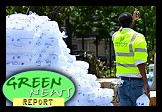 'Green News Report' 7/11/24
'Green News Report' 7/11/24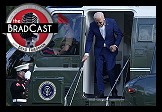 Paging 'Johnny Unbeatable'! Dems (Actually!) in Disarray!: 'BradCast' 7/10/24
Paging 'Johnny Unbeatable'! Dems (Actually!) in Disarray!: 'BradCast' 7/10/24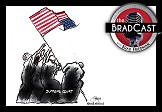 SCOTUS Immunity Ruling 'As Bad as it Sounds', And Worse: 'BradCast' 7/9/24
SCOTUS Immunity Ruling 'As Bad as it Sounds', And Worse: 'BradCast' 7/9/24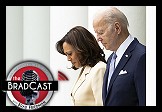 So, What Now?: 'BradCast' 7/8/24
So, What Now?: 'BradCast' 7/8/24 Debunking MAGA Cult Xenophobia
Debunking MAGA Cult Xenophobia A Friendly Suggestion: Harris-Newsom 2024
A Friendly Suggestion: Harris-Newsom 2024 Prosecutor: SCOTUS Corruption Ruling Less Corrupt Than Appears: 'BradCast' 6/27/24
Prosecutor: SCOTUS Corruption Ruling Less Corrupt Than Appears: 'BradCast' 6/27/24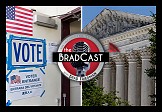 Good News and Bad: At the Polls and From the Corrupted Court: 'BradCast' 6/26/24
Good News and Bad: At the Polls and From the Corrupted Court: 'BradCast' 6/26/24 'Emptywheel' on Assange Hacking, Plea Deal: 'BradCast' 6/25/24
'Emptywheel' on Assange Hacking, Plea Deal: 'BradCast' 6/25/24
 VA GOP VOTER REG FRAUDSTER OFF HOOK
VA GOP VOTER REG FRAUDSTER OFF HOOK Criminal GOP Voter Registration Fraud Probe Expanding in VA
Criminal GOP Voter Registration Fraud Probe Expanding in VA DOJ PROBE SOUGHT AFTER VA ARREST
DOJ PROBE SOUGHT AFTER VA ARREST Arrest in VA: GOP Voter Reg Scandal Widens
Arrest in VA: GOP Voter Reg Scandal Widens ALL TOGETHER: ROVE, SPROUL, KOCHS, RNC
ALL TOGETHER: ROVE, SPROUL, KOCHS, RNC LATimes: RNC's 'Fired' Sproul Working for Repubs in 'as Many as 30 States'
LATimes: RNC's 'Fired' Sproul Working for Repubs in 'as Many as 30 States' 'Fired' Sproul Group 'Cloned', Still Working for Republicans in At Least 10 States
'Fired' Sproul Group 'Cloned', Still Working for Republicans in At Least 10 States FINALLY: FOX ON GOP REG FRAUD SCANDAL
FINALLY: FOX ON GOP REG FRAUD SCANDAL COLORADO FOLLOWS FLORIDA WITH GOP CRIMINAL INVESTIGATION
COLORADO FOLLOWS FLORIDA WITH GOP CRIMINAL INVESTIGATION CRIMINAL PROBE LAUNCHED INTO GOP VOTER REGISTRATION FRAUD SCANDAL IN FL
CRIMINAL PROBE LAUNCHED INTO GOP VOTER REGISTRATION FRAUD SCANDAL IN FL Brad Breaks PA Photo ID & GOP Registration Fraud Scandal News on Hartmann TV
Brad Breaks PA Photo ID & GOP Registration Fraud Scandal News on Hartmann TV  CAUGHT ON TAPE: COORDINATED NATIONWIDE GOP VOTER REG SCAM
CAUGHT ON TAPE: COORDINATED NATIONWIDE GOP VOTER REG SCAM CRIMINAL ELECTION FRAUD COMPLAINT FILED AGAINST GOP 'FRAUD' FIRM
CRIMINAL ELECTION FRAUD COMPLAINT FILED AGAINST GOP 'FRAUD' FIRM RICK SCOTT GETS ROLLED IN GOP REGISTRATION FRAUD SCANDAL
RICK SCOTT GETS ROLLED IN GOP REGISTRATION FRAUD SCANDAL VIDEO: Brad Breaks GOP Reg Fraud Scandal on Hartmann TV
VIDEO: Brad Breaks GOP Reg Fraud Scandal on Hartmann TV RNC FIRES NATIONAL VOTER REGISTRATION FIRM FOR FRAUD
RNC FIRES NATIONAL VOTER REGISTRATION FIRM FOR FRAUD EXCLUSIVE: Intvw w/ FL Official Who First Discovered GOP Reg Fraud
EXCLUSIVE: Intvw w/ FL Official Who First Discovered GOP Reg Fraud GOP REGISTRATION FRAUD FOUND IN FL
GOP REGISTRATION FRAUD FOUND IN FL


































